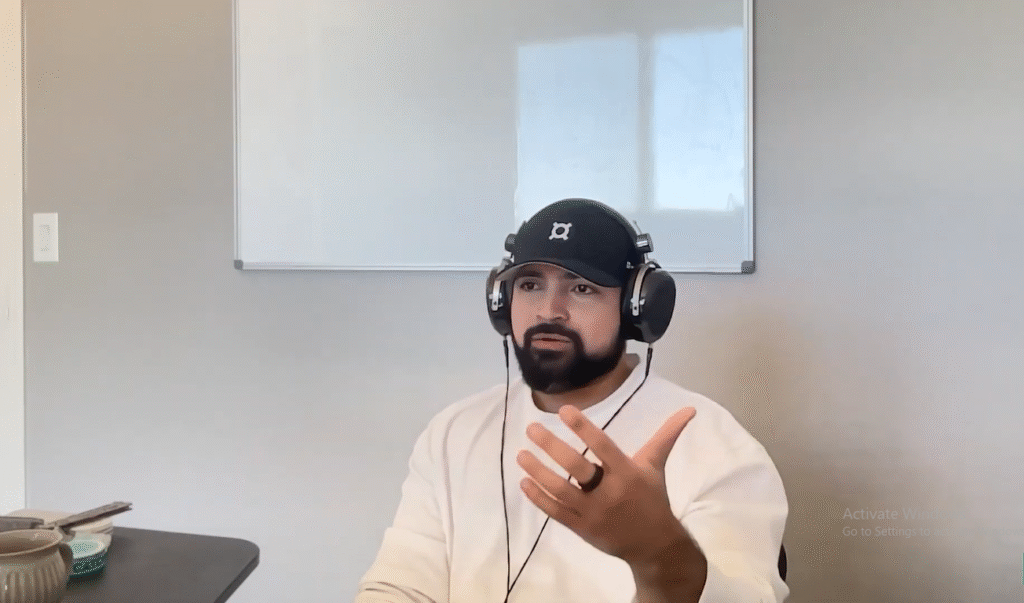Who Is Sam Kazemian? Frax Founder’s Vision for the Future of Stablecoins

🚀 Introduction – Who Is Sam Kazemian? Frax Founder’s Vision for the Future of Stablecoins
Why Stablecoins Matter in the Crypto Space
Let’s face it—crypto is volatile. One minute you’re up 50%, the next you’re panicking over red candles. That’s where stablecoins come in. They’re the glue holding DeFi together. Acting like digital dollars, stablecoins help traders, investors, and builders navigate the chaos with a bit more certainty.
Meet Sam Kazemian: A Disruptor in DeFi
Enter Sam Kazemian—a name that’s become synonymous with innovation in the stablecoin world. If you’re serious about crypto, you’ve heard of Frax. But behind that game-changing protocol is a visionary with a sharp eye for how decentralized finance (DeFi) should work. Kazemian isn’t just a founder; he’s a reformer challenging the very foundation of monetary systems.
🧒 The Early Life of Sam Kazemian

Background and Education
Sam Kazemian was born in Iran and later moved to the U.S. He studied neuroscience and philosophy at UCLA—an unusual combo for a future DeFi mogul, right? But that interdisciplinary thinking would later shape his unique approach to economics, governance, and blockchain.
From Everipedia to Blockchain Stardom
Before Frax, Kazemian co-founded Everipedia, a decentralized alternative to Wikipedia built on the blockchain. This project gave him firsthand experience with decentralization and community governance—key concepts he later refined in the Frax ecosystem.
🏗️ The Birth of Frax Finance

What Inspired the Creation of Frax?
Sam saw a massive gap in the stablecoin market. You had fully backed stablecoins like USDC, and then you had purely algorithmic ones like the ill-fated Terra (UST). But what if you could blend the best of both worlds?
That’s where Frax was born—the first fractional-algorithmic stablecoin.
How Frax Stands Out from Traditional Stablecoins
Frax isn’t your average stablecoin. It’s not fully backed. It’s not fully algorithmic. It’s somewhere in the middle—a “Goldilocks” model that adapts dynamically to market demand and supply while maintaining a stable peg.
Official Website – Frax Finance
🪙 Understanding Frax Stablecoin

What Is FRAX?
FRAX is a stablecoin pegged to the U.S. dollar, built to maintain price stability using a fractional-algorithmic model. That means part of its value is backed by collateral, and the rest is stabilized algorithmically.
Hybrid Stability Mechanism: Algorithm + Collateral
The Frax model starts with a high collateral ratio. Over time, as trust in the protocol grows, it reduces the collateral percentage. Smart contracts handle minting and redemption, ensuring constant price stability.
Key Differences from USDT and USDC
- USDC: Fully backed, centralized, and heavily regulated.
- USDT: Collateralized but opaque.
- FRAX: Transparent, partially collateralized, and designed to become more decentralized over time.
🌐 Frax Ecosystem Explained

Frax Share (FXS)
FXS is the governance and utility token of the ecosystem. It absorbs the volatility of FRAX and can be staked or used in governance decisions.
Frax Ether (frxETH)
Frax’s liquid staking derivative of Ethereum. You deposit ETH, get frxETH, and earn staking rewards—simple and DeFi-native.
FraxLend and FraxSwap
FraxLend lets users lend and borrow using the Frax ecosystem, while FraxSwap offers a native AMM designed for optimal liquidity and slippage.
Fraxchain – The Next Evolution
Kazemian’s team is now building Fraxchain, a native L2 blockchain that integrates all Frax protocols under one roof. Think of it as the Frax metaverse for DeFi.
🔮 Sam Kazemian’s Vision for the Future
A Decentralized, Scalable Monetary System
Sam isn’t in it for quick wins. His goal? Replace legacy financial systems with decentralized, scalable, and censorship-resistant monetary tools. FRAX is just the beginning.
The Push Toward Algorithmic Stability
While algorithmic stablecoins have had a rough past (RIP Terra), Sam believes the model still holds massive promise—if done right. With dynamic collateralization, transparency, and on-chain governance, Frax proves it’s possible.
Governance and Community Involvement
Sam is big on governance. He wants Frax to eventually be community-run, with FXS holders voting on key upgrades, monetary policy, and new integrations.
👉 Roham Gharegozlou’s Biography: Digital Ownership Pioneer
⚠️ Challenges Frax Faces

Regulation and the Algorithmic Stigma
Post-Terra, algorithmic stablecoins have a giant red flag over them. Regulators are watching, and Frax will need to stay ahead of compliance and transparency requirements.
Competition with Centralized Stablecoins
Let’s not forget giants like USDC, USDT, and now PayPal’s PYUSD. They’re centralized, trusted (by some), and heavily used. Sam’s challenge? Convince users that decentralization is worth the effort.
🏛️ Sam’s Take on Crypto Regulation

Transparency and Compliance
Sam isn’t anti-regulation. In fact, Frax has been designed with transparency in mind. On-chain reserves, real-time auditing, and community governance all help it stay ahead.
DeFi vs TradFi: Kazemian’s Balancing Act
He walks a tightrope—offering DeFi freedom with TradFi accountability. It’s a tough balance, but one that could shape the future of crypto.
🌟 The Impact of Sam Kazemian on DeFi
Pioneering New Stablecoin Models
Sam created an entirely new category in stablecoins. Fractional-algorithmic might just be the sweet spot between safety and decentralization.
A Thought Leader in the Web3 Space
From podcasts to interviews to Twitter threads, Kazemian is constantly dropping gems. He’s not just building; he’s educating and leading the next generation of crypto builders.
🔚 Conclusion
Sam Kazemian isn’t just another founder in the crypto space—he’s a visionary reshaping how we think about stable value in a decentralized world. With Frax, he’s shown us that innovation doesn’t have to come at the cost of stability. As DeFi continues to grow, you can bet Sam and the Frax team will be right at the heart of it.
❓ FAQs
1. Who is Sam Kazemian?
Sam Kazemian is the founder of Frax Finance and co-founder of Everipedia. He’s a visionary in the DeFi world, known for pioneering the fractional-algorithmic stablecoin model.
2. What makes Frax different from other stablecoins?
Frax is the first stablecoin to use a fractional-algorithmic model, combining the stability of collateral with the scalability of algorithms.
3. Is Frax truly decentralized?
Frax is designed to become increasingly decentralized over time through governance by FXS token holders.
4. What is the role of FXS?
FXS is the native governance and utility token of the Frax ecosystem. It absorbs volatility and gives holders voting rights on protocol decisions.
5. Where can I buy Frax or FXS?
You can buy FRAX and FXS on major exchanges like Coinbase, Binance, Uniswap, and Curve.
Please don’t forget to leave a review.

One Comment